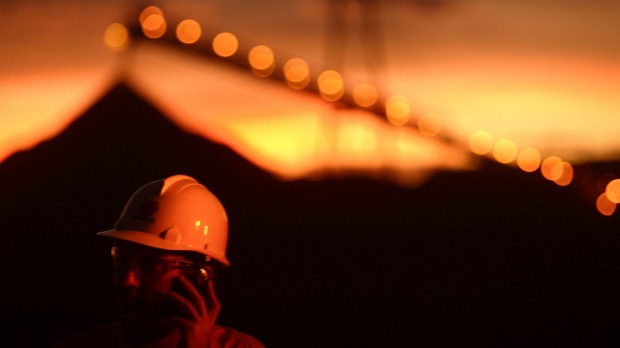
Doctors have urged people who lived near the proposed Adani Carmichael mine, and the transport links that would service it, to get their health checked now to arm themselves for possible action down the track.
Doctors for the Environment Australia member David King, a Brisbane-based GP and senior lecturer at the University of Queensland’s school of medicine, said those residents needed a “baseline” with which to compare their health down the track, should they fall ill as a result of the mine’s activities.
“I certainly would, because if I developed problems I could more easily prove it wasn’t from my exposure to something else 20 or 30 years ago,” he said.
“But it’s a shame they have to take that initiative and pay for it themselves when it ought to be the government’s responsibility, or the company that’s profiting from it and leaving the individual to collect the information that might or might not be needed.
“In some parts of the world, health impact assessments are part of the approvals process, but they’re not in Australia which is something we’re pushing for.”
Another DEA member, Mackay-based paediatrician Michael Williams, said not enough had been done to measure the potential health impact of the near-28,000 hectare mine, which was expected to produce 60 million tonnes of coal per year.
“Coal miners are at increased risk of occupational accidents from exposure to coal dust, which is highlighted by the re-emergence of ‘black lung’ in the Bowen Basin, Windborne invisible coal particles are also a risk to a wider population,” Dr Williams said.
“Exposure to pollution from coal even at low levels is linked to a range of serious and potentially fatal illnesses such as heart and respiratory diseases, including lung cancer.
“Air pollution contributes to an estimated 3000 deaths each year in Australia, more than twice the number of national road fatalities.”
So-called “black lung disease”, or pneumoconiosis, has re-emerged in Queensland over recent months, as symptoms emerge in miners with historical exposure to coal dust.
Dr Williams said the carbon dioxide output associated with burning the Adani coal would be “massive” and add to global health issues associated with human-caused climate change.
“Rising temperatures largely as a result of these greenhouse gases are already leading to heat-waves and other extreme weather events,” he said.
“These events have direct impacts on health, especially children, the elderly and those with existing illness, while mental health impacts are particularly felt in rural and regional communities as a result of drought and floods.”
However, Adani insisted its Carmichael mine would be safe, as it was approved wth the “strictest conditions ever handed down under the government’s rigorous environmental approval regime” after a six-year approval process.
An Adani spokesman said the coal dust released into the atmosphere while in transit would be minimised.
“Adani is committed to meeting the new industry standard of veneering all coal wagons,” he said.
Wagon veneering involves spraying the tops of loaded coal wagons with a polymer film that hardens and prevents dust emissions.
“Additionally, the company will implement a coal dust management plan and actively monitor air quality along the rail line,” the spokesman said.
“Regarding pneumoconiosis, Adani’s views are in line with those of the state government and the industry’s peak body, the Queensland Resources Council.
“Like all miners, Adani will continue to abide by strict (occupational health and safety) regulations that apply in the industry, and will work with the government and the rest of the sector in awaiting the outcome of the Sim review.”
Queensland Natural Resources and Mines Minister Anthony Lynham appointed Monash University occupational physician and epidemiologist Malcolm Sim to review the existing health screening system, where coal mine workers had chest X-rays when they started work, then at least every five years, and when they retire.
“I expect an interim report by the end of the first quarter and detailed recommendations by the middle of the year,” Dr Lynham said earlier this month.
